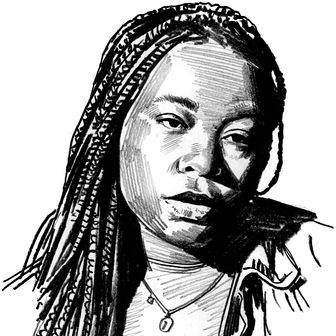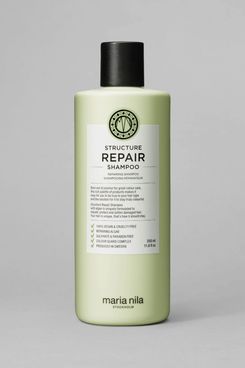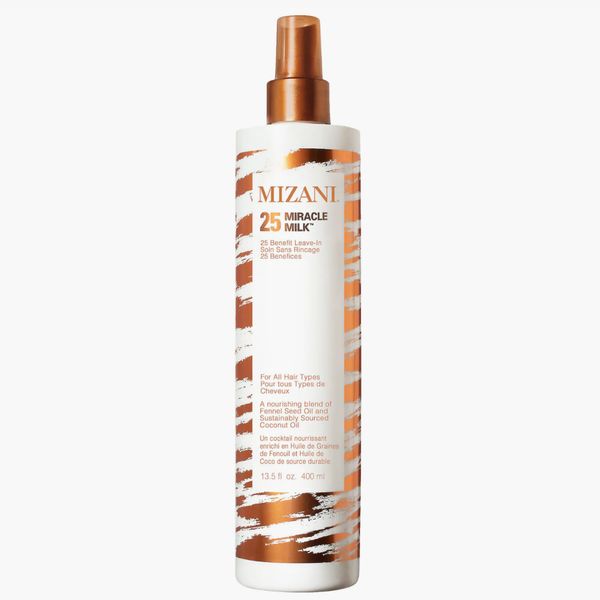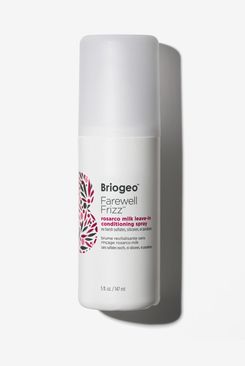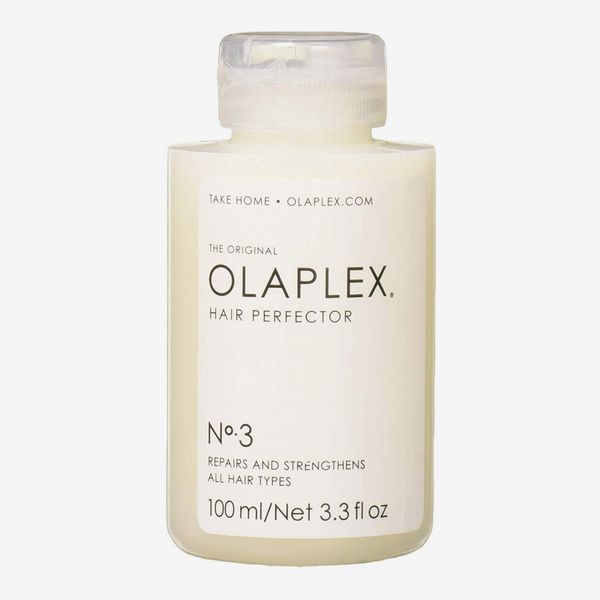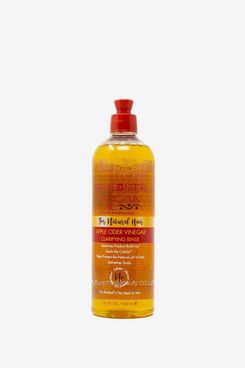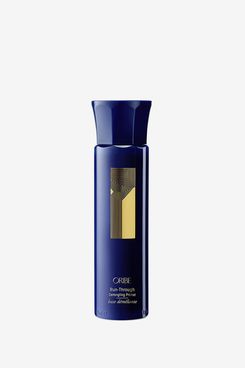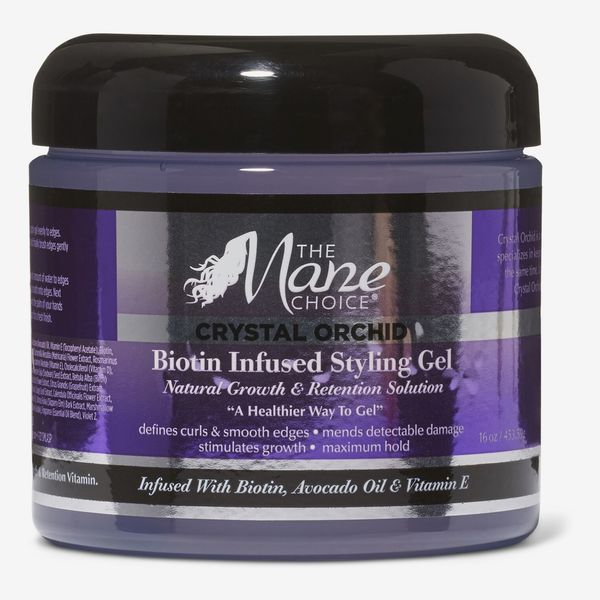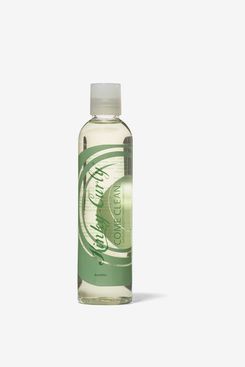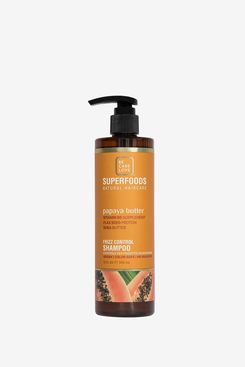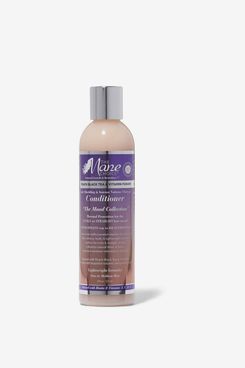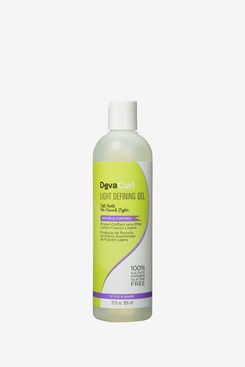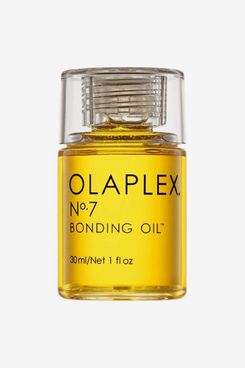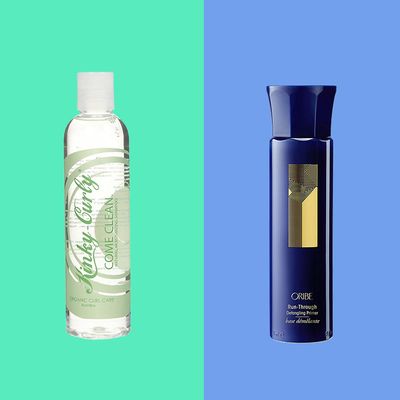
A version of this story originally appeared on the Strategist U.S.
What’s your hair type? A seemingly simple question, but the answer can get complicated. There’s unlimited combinations of thickness, density, curl pattern, and texture. And then there’s porosity, the less-buzzed-about (but still really important) hair-type measure. Porosity determines how your hair absorbs and retains moisture. And for many people, it’s normal: Their hair dries at a moderate rate (not too fast, not too slow), and products actually have an impact on the look and feel of the hair. But if your strands are high or low porosity, they won’t absorb moisture normally and will likely be tangly, frizzy, or dry.
Porosity is determined by both your genes and your hair care. To figure out your own, try this popular test: Place a strand in water for two to four minutes. If it floats, water (hydration) isn’t penetrating the hair shaft and you have low-porosity hair. Conversely, highly porous hair will quickly sink. Observe how it responds to washing and styling, too. You’ll notice low-porosity hair takes a long time to saturate with water or that water beads up on it initially. Very porous hair soaks up products initially but quickly after will look and feel dry. While high-porosity hair can be hereditary, oftentimes it’s due to bleaching, colouring, and overuse of heat. Aside from using products that lock in moisture, reducing heat styling and taking a break from hair-damaging processes can help.
Joann Gruny, a texture expert at Maggie Rose Salon, has a helpful rule of thumb: High-porosity hair, which absorbs moisture but doesn’t retain it, needs thick products that’ll seal in hydration. Low-porosity hair does best with water-based lightweight products because they absorb rather than sit on top of the hair shaft. Below, the best products for each hair type, according to stylists.
High-porosity hair
Best shampoo and conditioner for high-porosity hair
Diane Da Costa, hairstylist and owner of Simplee Beautiful salon, says that hydrating high-porosity hair starts with shampoo and conditioner. “The shampoo and conditioning regimen is the only way to solve the porosity challenge,” she says. Da Costa recommends ultra nourishing Maria Nila Repair Shampoo and Conditioner, which contains reparative algae extract. She likes to pair the combination with a steam treatment, which helps the products to penetrate deeper into the hair shaft.
Best leave-in conditioners for high-porosity hair
Ebony Clark-Bomani, a cosmetologist and educator, recommends moisturizing in layers because it slows down evaporation. After using a nourishing shampoo and conditioner, she recommends using a lightweight leave-in like Mizani 25 Miracle Milk. This conditioner also protects against heat damage and cuts down frizz. While this works well for all hair types, its texture makes it particularly good for fine hair types, which require moisture but can’t handle heavy products.
Clark-Bomani also likes Briogeo Rosarco Milk Leave-In Conditioning Spray because it uses a blend of nourishing oils (rose hip, argan, and coconut) to lock in moisture and prevent frizz.
Best treatment for high-porosity hair
Celebrity hairstylist Christin Brown uses a combination of Olaplex No. 1 Bond Multiplier and No. 2 Bond Perfector to fill in gaps in the hair shaft. “This is a major ace in the pocket for high-porosity hair because it really helps to calm down the cuticle, providing the hair with some real repair instead of placing a Band-Aid on it,” she says. While Olaplex No. 1 and No. 2 are salon-only treatments, No. 3 offers similar (albeit less potent) benefits but can be used at home. Brown also recommends washing high-porosity hair in warm water (but not hot — it creates frizz). “I know it sounds easy, and yet everyone is still not doing it,” she says. She also recommends rinsing with cool water as your final shampooing step. “Cooling the hair down after you condition can really help high-porosity hair dry frizz free.”
Best sealant for high-porosity hair
All that moisture from conditioning is useless if it isn’t locked in. Products with an acidic pH cause the cuticle to contract and act as hydration sealants. Hairstylist and author of Natural Hair: Hairversations Pat G. Williams likes this after-conditioner rinse from Creme of Nature. The apple-cider vinegar in the formula makes it slightly acidic, plus argan oil helps lock in moisture.
Best sealant with heat protectant for high-porosity hair
High-porosity hair is already prone to breakage, so you should insulate it from damage during heat-styling. Hairstylist Leigh Hardges of the Maxine Salon always starts with this Oribe detangling primer that doubles as a heat protectant. It has a lotionlike consistency and cuticle-sealing technology that protects the hair from heat. Amino acids repair the strand and moisturize both the hair and scalp. Next, she layers on Kérastase Nutritive Blow-Dry Primer for Dry Hair. “It penetrates into the hair strand and gives the ‘slip’ I need to style easily,” she says.
Best styler for high-porosity hair
If your hair is thick and coarse, heavy creams and butters will best hydrate your hair and minimize frizz. Gruny likes Carol’s Daughter Hair Milk Curl Defining Butter for its avocado oil and honey (a humectant). Agave nectar provides curl-defining hold.
[Editor’s note: Gruny’s pick is not currently available in the UK, but this alternative from Camille Rose offers a similar heavy butter consistency and mixture of oils.]
Best gel for high-porosity hair
Clark-Bomani styles high-porosity hair with gel because it forms a barrier around each strand, locking in moisture and setting the style. The Mane Choice Alpha Crystal Orchid Biotin Infused Styling Gel contains biotin and vitamin D to prevent breakage.
Low-porosity hair
Best clarifying shampoo for low-porosity hair
It’s essential that low-porosity hair be truly clean after shampooing because it’s prone to build-up. Wash with really warm water to open up the hair cuticle. And use a clarifying shampoo regularly. Brown likes this one from Kinky Curly. “It gives your hair a chance to let go of ingredients that build up, which prevent proper hydration,” she says. This shampoo deeply cleanses using phytic acid, which removes hard-water mineral build-up along with excess product and oils.
Best moisturizing shampoo for low-porosity hair
Da Costa recommends a double wash, starting with a clarifying shampoo (like the Kinky Curly) to open the cuticle, then following it up with a rich, moisturizing shampoo with humectants (think glycerin and hyaluronic acid), like this one from Be Care Love. Its shea butter and vitamin B5 pull hydration to the hair. “A super-hydrating, humectant shampoo like this one can handle low porosity,” she says.
Best conditioner for low-porosity hair
Clark-Bomani likes lightweight conditioners like this one for low-porosity hair. It uses glycerin, a humectant, to attract moisture to the hair. Thick or heavy conditioners just sit on top of low-porosity strands. She cautions against products with protein, which can build up on the hair and make it brittle.
Best styler for low-porosity hair
Avoid oils, too, says Clark-Bomani. They sit on top of the hair, seal the cuticle, and are difficult to rinse out, all of which are counterproductive to moisturizing low-porosity hair. Use gels instead. Her favorite from DevaCurl defines and holds curls without the crunch you might get with other gels.
Best oil for low-porosity hair
If an oil is a must-have, Brown recommends this water-soluble version from Olaplex, which easily rinses out with warm water. This oil can be used on wet or dry hair and protects against heat damage up to 450 degrees. It also helps minimize flyaways and frizz but is incredibly lightweight.
The Strategist UK is designed to surface the most useful, expert recommendations for things to buy across the vast e-commerce landscape. Read about who we are and what we do here. Our editors update links when possible, but note that deals can expire and all prices are subject to change.
